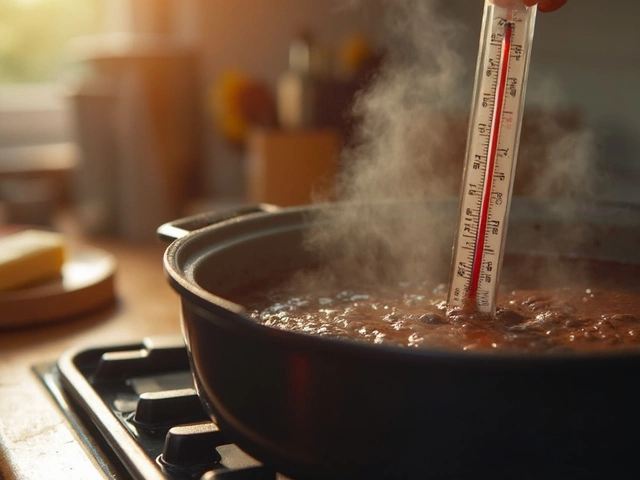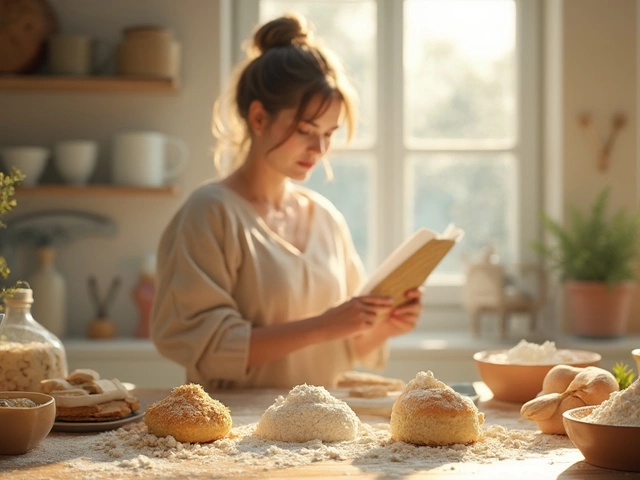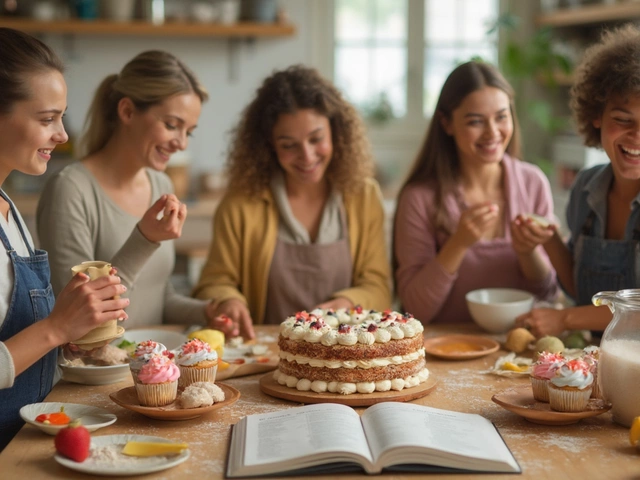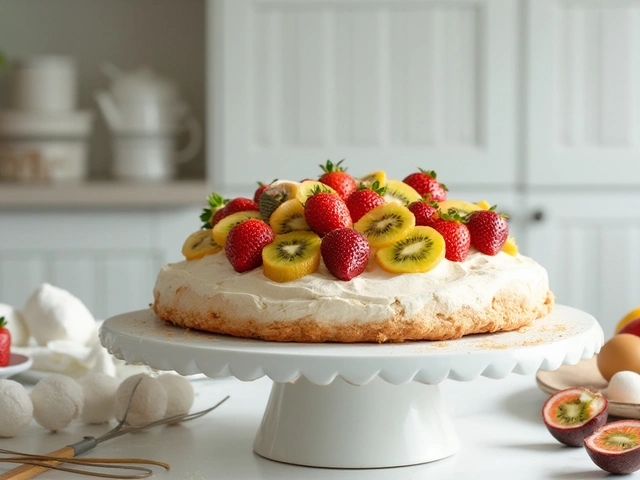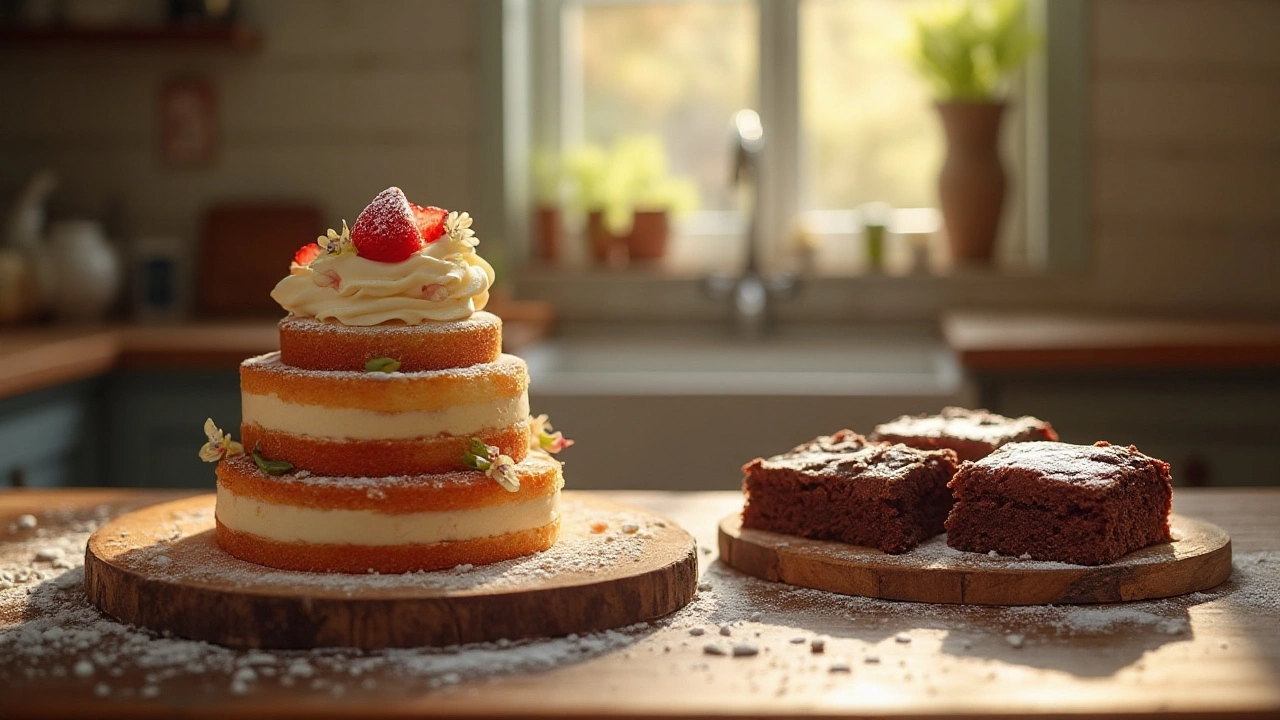
Exploring the world of baked treats, we often find ourselves choosing between the airy elegance of a cake and the gooey richness of a brownie. These quintessential desserts, while seemingly similar, bring their own distinct experiences to the table.
Cakes are celebrated for their soft, spongy texture brought about by careful measurements of flour, sugar, and leavening agents like baking powder or soda. On the other hand, the classic brownie boasts a chewy, dense charm, thanks to its lesser reliance on flour and higher emphasis on cocoa or chocolate.
In this journey through the realms of baking, let’s uncover the magic behind these beloved sweets, examining their histories, core ingredients, and secret tips to perfect both desserts in your own kitchen. Whether you’re a seasoned baker or a dessert enthusiast, diving into these details will surely sweeten your understanding and delight in every bite.
- Origins and Evolution
- Key Ingredients and Their Roles
- Texture and Flavor Differences
- Baking Techniques
- Tips for Perfecting Your Dessert
Origins and Evolution
The origins of these delightful desserts, cakes and brownies, can be traced back to ancient times, where each had its distinct path to becoming beloved staples in modern baking. Cakes, for instance, have a lineage that harks back to the early Egyptians who are credited with mastering the art of baking. Initially, these were more akin to sweetened bread, made from coarse seeds and honey. As baking techniques evolved across cultures and continents, so did the taste and sophistication of cakes. By the late 17th century, cakes began to take the form we recognize today—light, airy, and often layered—culminating from the introduction of refined sugar and advances in leavening methods.
The evolution of cakes was parallel to the fascination with culinary arts, reflecting societal shifts in taste and technology. Fast forward to the 19th century, it was the inventions of baking powder and baking soda that revolutionized how cakes rose to fluffy heights. The industrial era brought about mass production, making cakes a common treat across socio-economic classes, no longer reserved for the elite or special occasions.
The Oxford English Dictionary notes, "The word 'cake' is of Viking origin, from the Old Norse word 'kaka'."
Brownies, in contrast, have a more concise and less documented history, yet their rise to fame is no less captivating. Unlike cakes, brownies do not date back to ancient history but emerged at the end of the 19th century in the United States. Their exact origin is the subject of culinary legends, one popular story suggests they were the fortuitous result of a baker forgetting to add baking powder to a chocolate cake, leading to its characteristic dense and fudgy texture. By 1904, brownies were being widely recognized in cookbooks and ultimately found a permanent place within American dessert culture.
The development of brownies exemplifies the creative ingenuity found within baking; a 'mistake' turned into a worldwide phenomenon, cherished for its simplicity and indulgence. Today, the use of chocolate and a shorter stature differentiates brownies from their cakey counterparts—each bite captures the richness of cocoa in a way a traditional cake might not. As such, the evolution of both cakes and brownies showcases the adaptability and inventiveness found within culinary traditions, bringing joy and a little sweetness into daily life, one bite at a time.
Key Ingredients and Their Roles
When comparing cake and brownie, one must begin with the building blocks: their ingredients. Both desserts call upon a common pool of elements – flour, sugar, eggs, and fat – yet, the ratios and roles these ingredients play diverge, giving birth to two distinctive treats. For a classic cake, the ratio is often calculated to encourage aeration and rising. This is where baking powder or baking soda step into an essential spotlight; they help in leavening, giving cakes their signature light and fluffy texture. In contrast, brownies often shun these leaveners in favor of a more compact, fudgy bite.
Flour, a staple in almost every baked good, serves as the structural framework. Cakes use all-purpose or cake flour, which is sifted to encourage tender crumb formation because of its lower protein content compared to bread flour. Brownies, however, rely on a more minimal amount, which is balanced against rich, dense cocoa or melted chocolate. Sugar not only sweetens but also affects texture, with cakes requiring a higher sugar content to retain moisture. Brownies, embracing a robust flavor, often incorporate brown sugar or a higher chocolate content to achieve their dense richness.
The fat used in these recipes delineates texture and flavor further. In cakes, butter is creamed with sugar to trap air, leading to fluffiness. Alternatively, oil can be used for moistness and softness. Brownies, however, lean towards the abundant use of butter or a mix of butter and oil to foster that unmistakable chewy texture. Chocolates and cocoa powder bring brownies their unique bittersweet flavor profile. Eggs bind the ingredients and contribute to the overall structural integrity, with their quantity and stage of incorporation differing significantly between these desserts. Notably, brownie recipes might use an extra yolk, leading to a fudgier final product.
"The interplay of these ingredients contributes significantly to the textural contrast between these two sweets," writes renowned pastry chef Claire Saffitz. "Precision in measurement and technique transforms humble ingredients into masterpieces."
This detailed understanding of ingredients not only empowers one to create perfect baked goods but also serves as a window into the alchemy of baking, where each component dances to its unique role in the symphony of dessert creation.
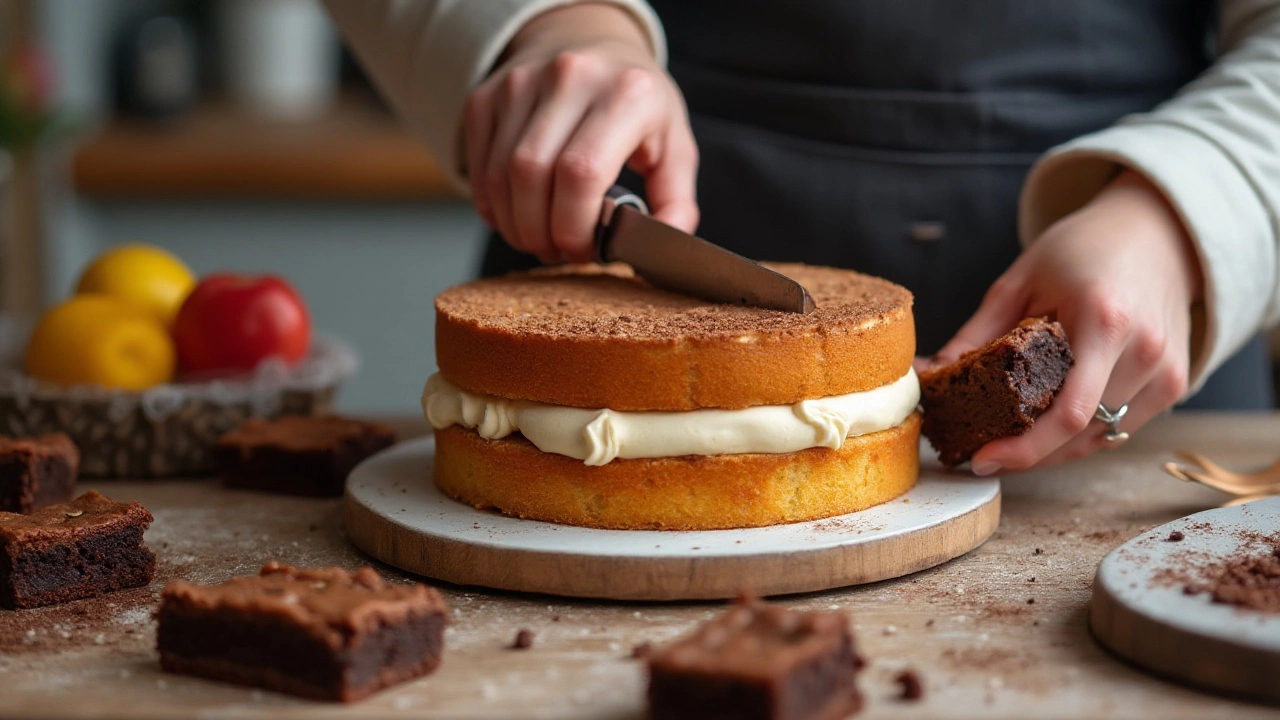
Texture and Flavor Differences
When stepping into the delightful world of desserts, you’ll quickly notice how cake and brownie each create a unique sensory experience with their textures and flavors. The luxurious feel of a cake often comes from its airy, soft consistency—a hallmark of the meticulous creaming of butter and sugar and the delicate balance between baking powder and soda. This approach allows the batter to rise, forming light, fluffy layers that are perfect for stacking and filling with creams, fruits, or ganache. On the flip side, brownies excel with their signature dense texture, giving a satisfying chew that nearly melts as chocolate mingles with every bite. This texture is achieved by minimizing leavening agents and instead focusing on fats, chiefly butter or sometimes oil, to ensure the classic fudgy center. Brownies typically contain less flour and more cocoa solids or melted chocolate, making them richer and heavier than their cake counterparts, allowing the chocolate flavor to be front and center.
The taste spectrum between these two desserts is just as captivating. Cakes can range from classic vanilla or lemon to decadent red velvet, and their taste profile expands further with frosting or filling choices. Fondant, cream cheese, and buttercream are just a few examples of how cakes get their flavorful edge. Brownies, however, are distinguished by their singular commitment to chocolate, offering variations like nut-studded or swirled with caramel or cream cheese. Interestingly, a study in the Journal of Culinary Science and Technology showed that the type of chocolate used could dramatically affect the final taste and texture, with high-cocoa content enhancing the depth of flavor.
"The heart of any brownie lies in its simplicity; it’s a chocolate lover’s answer to a quick fix, gradually revealing its rich flavor bit by bit," says acclaimed pastry chef Alexandra Crane.This reflects the intense satisfaction that one often seeks in a decadent dessert, making brownies an irresistible option for those with a sweet obsession.
While exploring the differences, it's important to note that the baking temperature and time contribute significantly to developing these textures. Cakes are often baked at moderate temperatures, allowing them to rise and bake evenly, whereas brownies benefit from being baked a bit lower and slower. This method ensures the edges are slightly firmer for easier cutting, while the middle remains delectably soft. If you were ever curious, a small survey conducted by The Baking Institute found that over 60% of bakers prefer using dark chocolate over milk chocolate for brownies, which results in a deeper, more pronounced flavor. Taking the time to understand these elements not only enhances your baking skills but also enriches your appreciation for how these beloved treats come into their own. By focusing on these key differences, the next time you bake, you’ll be better equipped to tailor your dessert to suit every occasion and preference.
Baking Techniques
Baking a perfect cake or brownie is both an art and a science, and mastering the right techniques can take your sweet creations from ordinary to extraordinary. Each dessert requires a unique approach to bring out its best qualities. For cakes, achieving that perfect rise and fluffy texture hinges on the balance and interaction of ingredients, particularly the use of leavening agents. Baking powder and baking soda create bubbles that help the cake expand and become light and airy. The creaming of butter and sugar is not just about mixing; it's about incorporating air thoroughly for a delicate crumb.
Brownies, though, offer a different set of challenges. Their delectable dense structure comes from a precise mix of ingredients. Unlike cakes, they don't rely on leavening agents to rise as much. Instead, the ratio of flour to fat is crucial, aiming for a chewy center with crispy edges. Melting chocolate for brownies is a key step that can affect the overall consistency; you want the chocolate to melt smoothly and blend luxuriously with the butter.
The famed baker Julia Child once said, "A party without cake is just a meeting," highlighting the cultural importance of mastering the perfect bake. To execute these beloved treats, precision in measuring ingredients cannot be overstressed. Baking is chemistry—too much flour and you’ll end up with a dry cake or brownie, too little, and your dessert might collapse.
Another vital aspect is the pan choice. Cakes benefit from the use of deep round or square pans that allow even baking and a uniform rise. Brownies, favored for their crispy corners, thrive best in shallow rectangular pans where the heat can distribute evenly. As for baking temperature and time, cakes generally require a moderate oven heat—around 350°F (175°C)—to allow for slow, steady rising, whereas brownies, depending on their size, often bake at similar temperatures but for less time.
Decorating and cutting the finished product is the final flourish. For cakes, letting them cool before frosting prevents the layers from sliding and the frosting from melting, ensuring a beautiful presentation. For brownies, the temptation is often to cut them straight from the oven, but a brief rest at room temperature ensures cleaner slices and a more robust flavor. Embrace creativity with your toppings; whether it's a dusting of sugar, a sprinkle of nuts, or a dollop of cream, presentation can elevate the simplest desserts into a feast for both the eyes and taste.

Tips for Perfecting Your Dessert
Baking the perfect cake or brownie isn't just about following a recipe, it's an art that requires understanding and sensitivity to ingredients and techniques. The first tip is to always use quality ingredients. Fresh eggs, premium chocolate for brownies, and top-notch vanilla extract for cakes can elevate your dessert from good to unforgettable. Measurements should be accurate; a slight variance can affect the texture and flavor. For example, a cake needs a perfect balance of flour and sugar to maintain its characteristic softness, while a brownie thrives on a carefully measured harmony of sugar and cocoa.
Don't forget the importance of the mixing technique. Cakes demand a gentle touch when folding in flour to avoid toughening the batter, while brownies benefit from a well-beaten mix to dissolve sugars thoroughly and introduce just the right amount of air. It's advisable to monitor baking temperatures closely. An oven thermometer can be your best friend, ensuring your desserts bake evenly without burning or undercooking. For cakes, a toothpick test can help check for doneness without relying solely on prescribed baking times, as every oven varies.
"The secret ingredient in every good dessert isn't sugar, it's love," says renowned pastry chef, Adeline Stryker. This sentiment underscores the importance of patience and care in the kitchen. Remember to let your cakes cool in their pans on a wire rack for at least ten minutes before turning them out to firm up properly.
An often-overlooked aspect is storage. Cakes should be stored in airtight containers to maintain moisture, while brownies, which improve in flavor after a day, can be wrapped in foil or parchment paper for preservation. Decorations also play a role in the allure of your desserts. A dusting of cocoa on brownies or a sprinkle of edible flowers on cakes can add visual appeal and a hint of flavor surprise.
Understanding the chemistry of baking contributes to success, as well. Knowing how each ingredient interacts can help troubleshoot any issues. Is your cake too dense? You might have overworked the batter. Are the brownies too dry? They may have baked a few minutes too long. Embrace experimentation, keeping notes for next time to refine your go-to recipes and consistently bake your best desserts.

